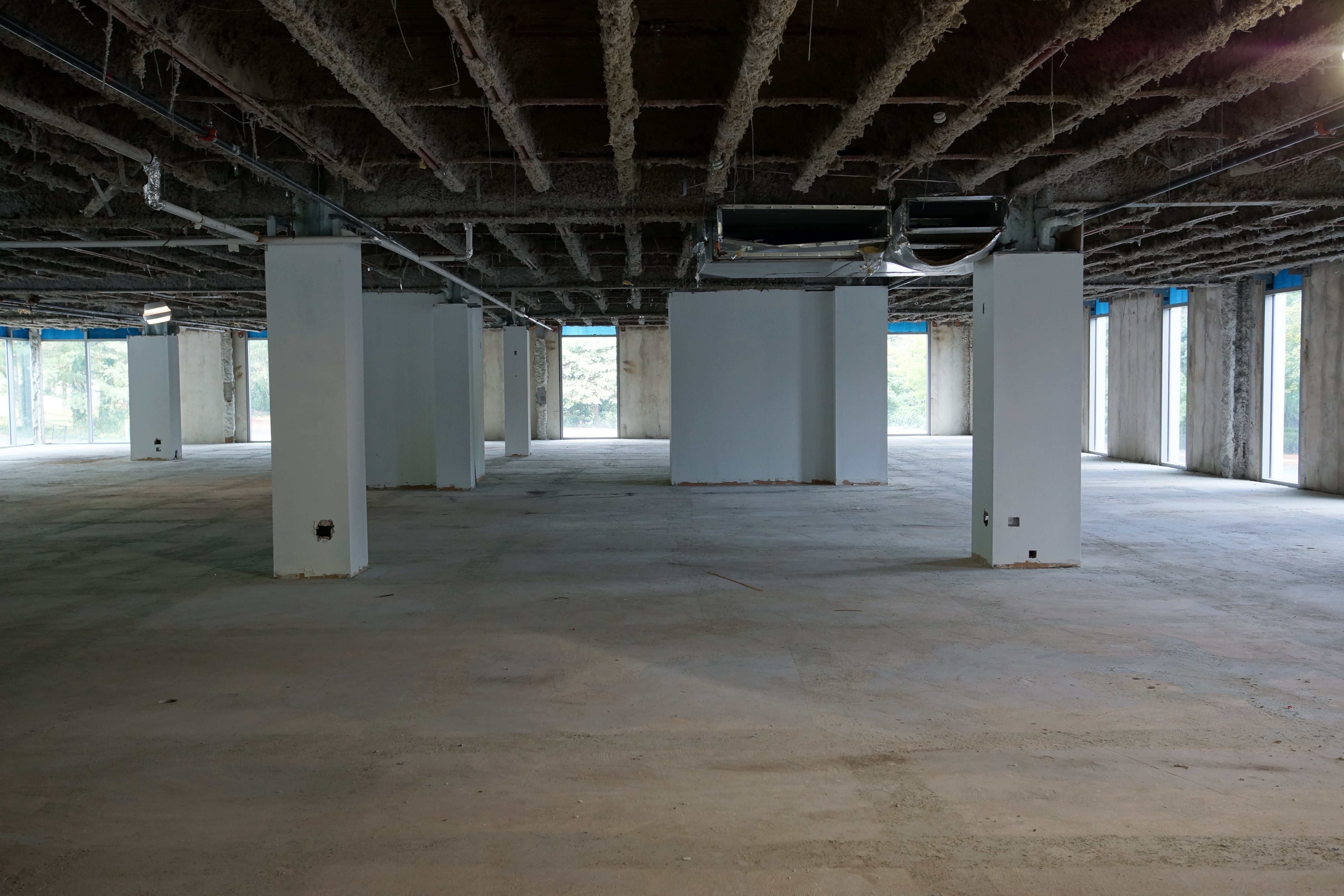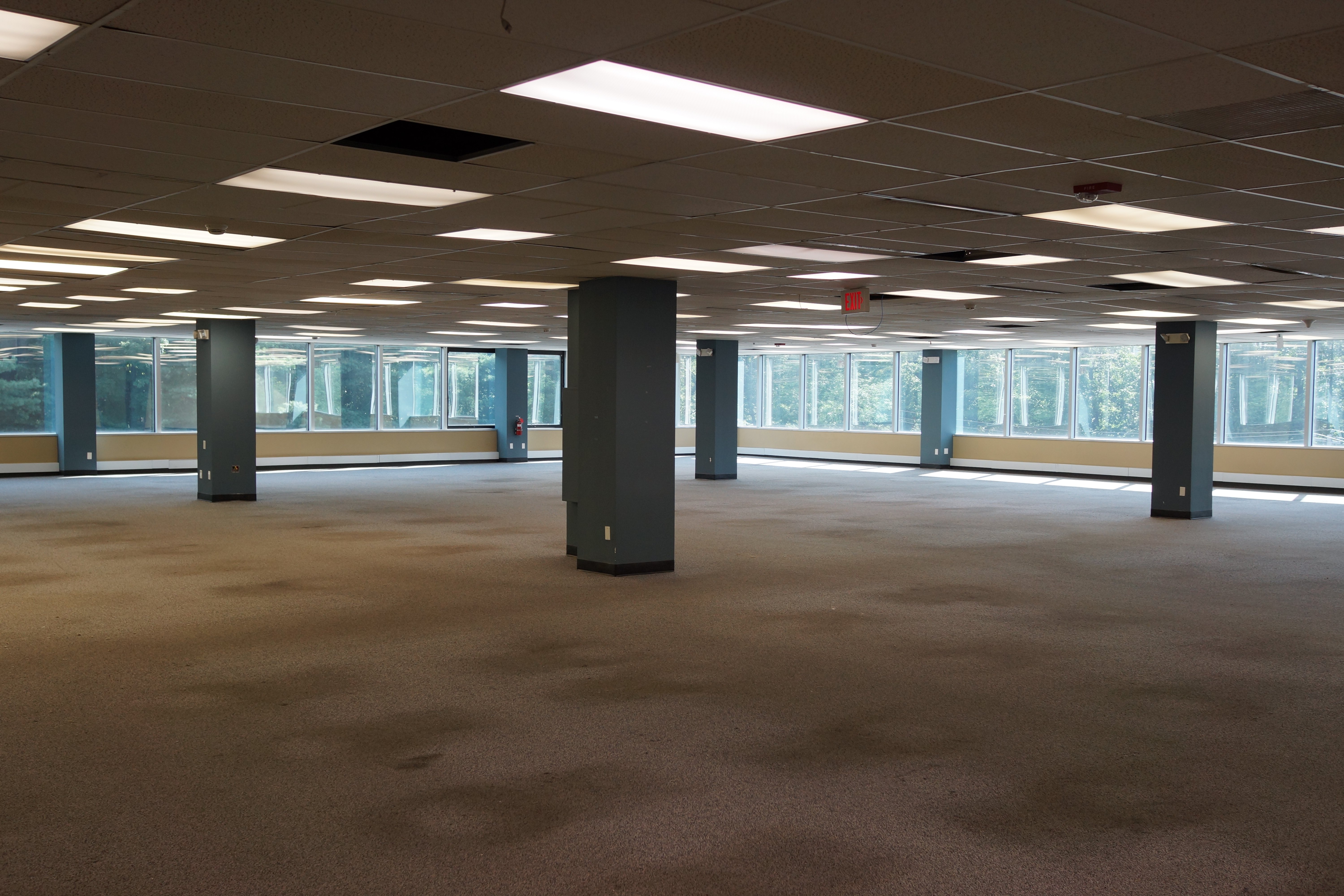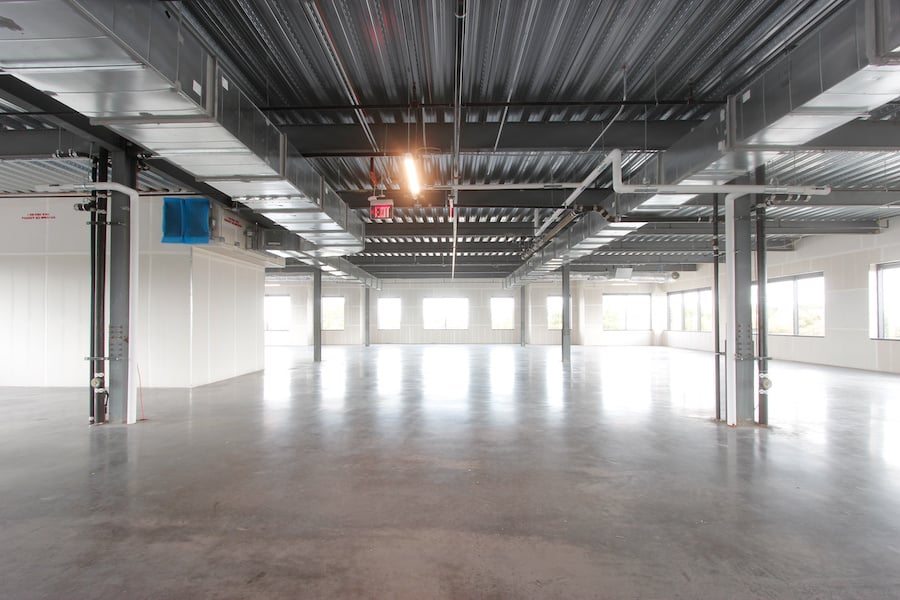What’s the most significant predictor of your corporate real estate’s cost and timeline? The building’s initial state.
The condition of your leased property will influence when you can move in, how much you can expect to receive in tenant improvement allowance, and the amount of work to be completed before you can move in.
How do we know this? As tenant reps, we have helped our corporate clients move into properties of every condition. We have seen the factors that influence the move-in process and why some building states are more appropriate for some tenants than others.
So, if you want to learn more about commercial real estate property conditions, read on. We will outline the primary forms they will appear so you can make decisions that work for your budget and timeline. In this article, we will discuss the following:
First Generation Space
Properties that have never housed tenants can come in many forms. Depending on what stage of construction in which the landlord markets the space, your time commitment and level of responsibility will vary.
Green Site
The green site is the most underdeveloped property state. It is typically an untouched, virgin site that earns the “green” name due to the trees still in place.

Typically, the property has been bought, but nothing further has yet been done. The area still needs to be cleared, graded and the only defining characteristic is probably the property line. It may or may not have proposed building plans. Often though, the property will have been surveyed with specific allowances. It will likely be zoned as commercial, industrial, etc., which will dictate future construction plans.
If it is not already zoned for your type of usage, then you probably want to pass on the site as re-zoning is a challenging and time-consuming process.
Why Choose a Green Site?
Green sites are for tenants who are in it for the long haul. They give you the ability to build your dream building from bottom to top. Since no construction or plans are underway, you have complete freedom to determine the creative direction of your commercial property.
This can be perfect for a new corporate headquarters in which the company wants to have strong input into the overall design of the building (or even buildings).
Beyond office space, a great industrial example is Tesla's Giga type factories. They always start with a Green Site as their manufacturing facilities have incredibly unique designs.
Green Sites are ideal for tenants who can devote time to accomplish their property goals in conjunction with their landlord and builders.
Shovel-Ready Site
One step up from the green site is the shovel-ready site. Whereas the green site earns its name from the trees, the shovel-ready site likely appears as a dirt lot.

The area has been cleared and graded. It likely has a developer who already received approval to go ahead with plans but may be waiting on the promised cash flow of tenants to begin construction.
Plans are subject to the approval of town councils like the Buildings and Homes Board. They must ensure that the property intention will meet specifications for factors like:
- Parking ratios
- Tenant footprint
- Property set backs
- Maximum height and/or floors
- How much greenery should be present
- Water usage and sewage disposal
Why Choose a Shovel-Ready Site?
Similar to the green site, starting with a graded site will allow you to inhabit the office, warehouse or manufacturing space of your dreams. You can work in conjunction with the landlord to determine floor plans and layouts that maximize productivity.

You receive all of the benefits associated with being present for the build-out. Since the building has not yet been constructed, you get the peace of mind that there are no hidden flaws in the property.
Build-to-Suit
Both green and shovel-ready sites are built to suit properties. The developer/landlord has the site and is looking for the right tenant or buyer to create a build-to-suit facility for.

Build-to-suit sites can be a match made in heaven for the right tenant or buyer. However, the timeline can get complicated.
|
Any hold-up in the construction or approval processes can cause exponential delays on the back end. |
As a result, it can be complicated to align the commencement of a build-to-suit site with the end of your existing lease.
If you are willing to devote the time to a build-to-suit property, it can be a great way to ensure that your corporate property meets any and all needs your company has.
Why Choose a Build-to-Suit?
Two words: creative control. Build-to-suit sites give tenants or buyers the unique ability to contribute to the building plans. As a result, your organization can construct a space that exactly fits its needs.
Shell Condition
Shell states may or may not be first-generation space. Either the landlord has constructed the skeleton of a new building or gutted the area previously inhabited by an old tenant.
Shell states themselves can be packaged in different conditions. Therefore, there is a spectrum in which they exist. Your rental rate and tenant improvement allowance will vary depending on how move-in-ready the space is.

Think of the tenant improvement allowance as a fund for customizing the property to meet the specific needs of the tenant. If you equip it with features like lighting and HVAC, they will exist even after you move out. Therefore, your landlord can ask the next tenant for a higher initial rental rate since less work is required. However, if you were the sole occupant of a long-term lease, the useful life of features like HVAC may coincide with your lease's term. In that case, your budget may be responsible for covering the cost.
Not all shell conditions are the same. Here are the following types.
Cold, Dark Shell
This is the barest form a commercial property can take. Essentially it is what it sounds like: cold and dark.
The space lacks:
- Heating
- Ventilation
- HVAC
- Ceilings
- Interior wall finishes
- Lighting
Similar to the cold, dark shell is the cold shell. The only difference is that the latter is equipped with lighting.
Cold, dark shells give the tenant great flexibility to adapt the space to their needs. However, as you can imagine, this form requires the most renovations (and the most upfront expenses). As a result, the starting point for rent prices will likely be lower.

Tenants who want complete creative control over their corporate properties and don’t mind an extensive construction process may consider cold, dark shells.
Why Choose a Cold, Dark Shell?
Cold, dark shells give you the opportunity to get the office space you want. You have the freedom to specify the plans that will achieve your ideal workflow balance.
If you have extraordinary HVAC, power, ceiling height, etc. needs, then you probably want to consider a cold, dark shell. Otherwise, it will cost the landlord (and you) more money to try and convert a conventional office (warm, lit shell) to your extraordinary needs. That said, with money, most things can be done.
Since cold, dark shells are the barest form an office can take, your base rent should be lower than in other conditions. If your tenant improvement allowance starts at a cold, dark shell, you will need to negotiate for a much higher allowance since a good part of it is going toward making a warm, lit shell, even before the real work of your office space begins.
The work can take place within the confines of the pre-existing building. As a result, you get most of the creative control of build-to-suits in a relatively shorter timeline.
Warm, Vanilla Shell
A warm, vanilla shell is more ready for tenants to move in. Less work is required of the tenant before they can occupy the space.

Warm, vanilla shells are typically equipped with:
- Ceiling
- Lighting
- Interior has a basic finish
- Plumbing
- HVAC
- May have painted walls
- Electrical outlets
- Restrooms
- Concrete or finished flooring
Similar to the vanilla shell is the vanilla box which may exclude the HVAC system.
Why Choose a Warm Vanilla Shell?
Warm, vanilla shells are the most commonly available form of office space. As a result, tenants have the ability to be more aggressive in their negotiations.

Since warm, vanilla shells are so abundant, there is more competition for landlords. They have to offer more perks to get tenants in their space. For tenants, this possibly means more landlord concessions like a higher effective tenant improvement allowance. Effective here means that the tenant improvement allowance is starting after the warm, lit components are already present.
Second Generation Space
Second-generation space requires far less work. Your building will presumably come equipped with the following features already:
- Ductwork
- Ceiling
- Outer walls
- Plumbing
- HVAC
Due to this, you may receive a less substantial tenant improvement allowance in your work letter. You, the tenant, must ascertain the beginning point from which you are responsible for buildout.
|
Is the starting point of your work letter allowance from a cold, dark shell or from second generation space? |
A great tenant rep will fight to get your work letter allowance to start at the point at which you have a warm lit vanilla box. That way, you only have to reach into your budget for above building standard, company-specific enhancements.

Turnkey Properties
ess’ specialties. For example, a dental practice will require different enhancements to be in working order than a company like Google.
The type of property is another consideration. Warehouse, retail, and office spaces will all have different turnkey requirements.
The turnkey state is also highly dependent on negotiations with your landlord. They may be thinking at a base level of standard construction practices, materials, and office layouts. However, you may be expecting extensive glass office partitions, executive break-rooms, and premium enhancements.

Subleased Space
With subleased properties, another tenant has a lease with the building's landlord (leasehold estate). They become the sub-landlord and will draft a separate leasing agreement (sublease) with you as the sub-tenant.

The original tenant is likely subleasing to dispose of extra space. A sublease cannot grant you any greater rights than the original lease to the sub-landlord contains, so you must review both the original lease (and all its amendments!) and your sublease. This can be quite arduous and screams out for having a great tenant rep and experienced commercial real estate attorney on your team.
Why Choose Subleased Space?
One of the primary benefits of subleasing space is accessibility. The timeline for move-in will be rather quick as there is little to no work to be completed before your tenancy.
Tenants looking for space as soon as possible should be directing their attention to subleases properties. They are likely newly furnished, modern, and ready for occupancy.
You will also likely be able to move in and out of the property easily. Since the property just housed another tenant, it will presumably be ready for your occupancy.
The main benefit of subleasing space is affordability. If you need space right away, you can get away with extremely low rental payments for the term remaining in the existing lease. Tenants can find Class A office space for 50 to even 10 cents on the dollar. The exact amount will depend on the remaining lease term, the desperation of the original tenant to get out of their lease, and the supply and demand of the current market.
How Can a Tenant Rep Direct You to the Best Property for You?
Tenant reps are present in the real estate field every day. They know what you should expect in your property, depending on its initial condition. They are also experts in negotiation who protect your interests when dealing with your landlord.

They provide expert market knowledge critical to finding you the best sites with the features you need at an optimal price. Tenant reps provide assistance at every stage and will be around to help you decide what property condition will promise the most savings and perks.
Check out this article to learn more about tenant reps!







